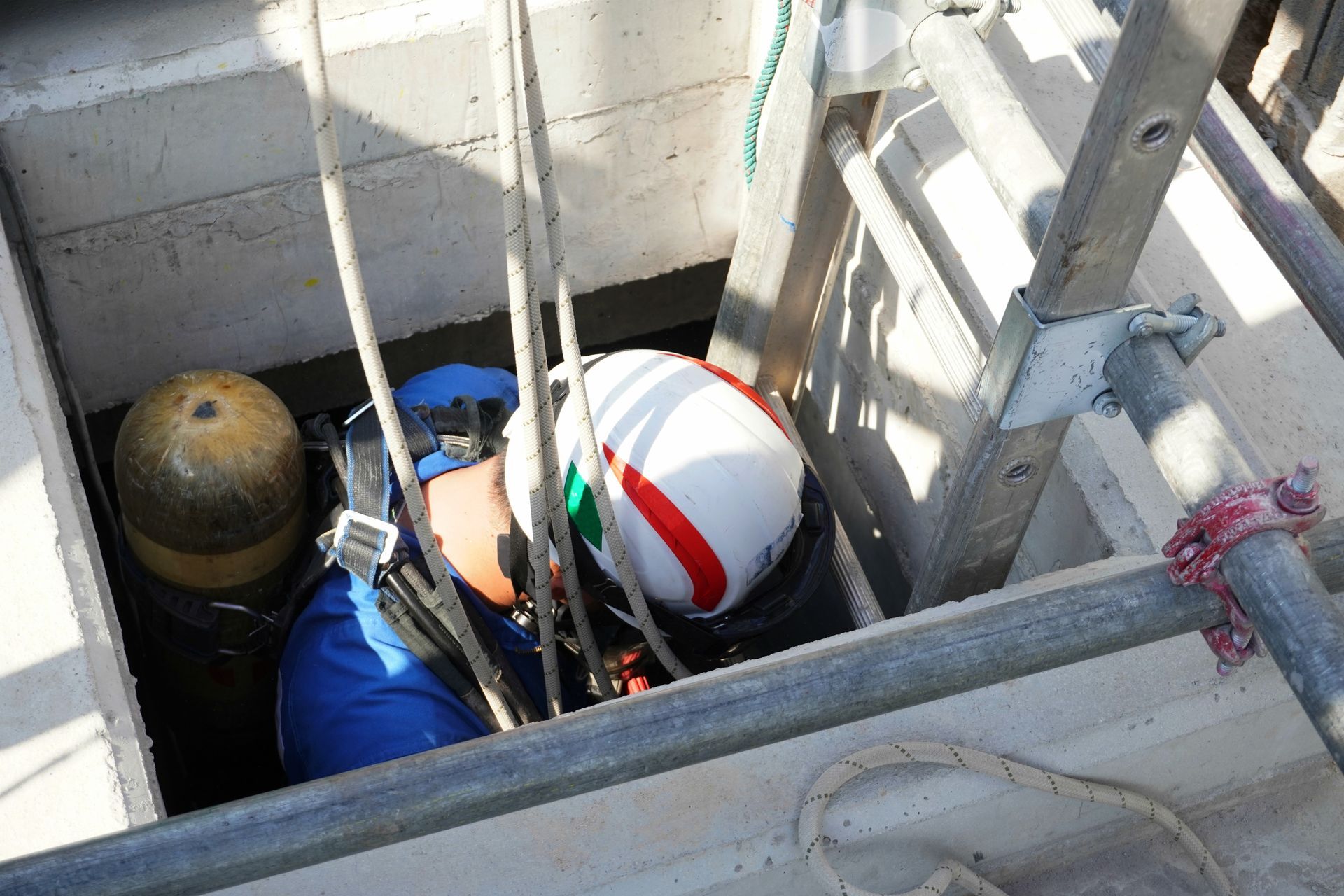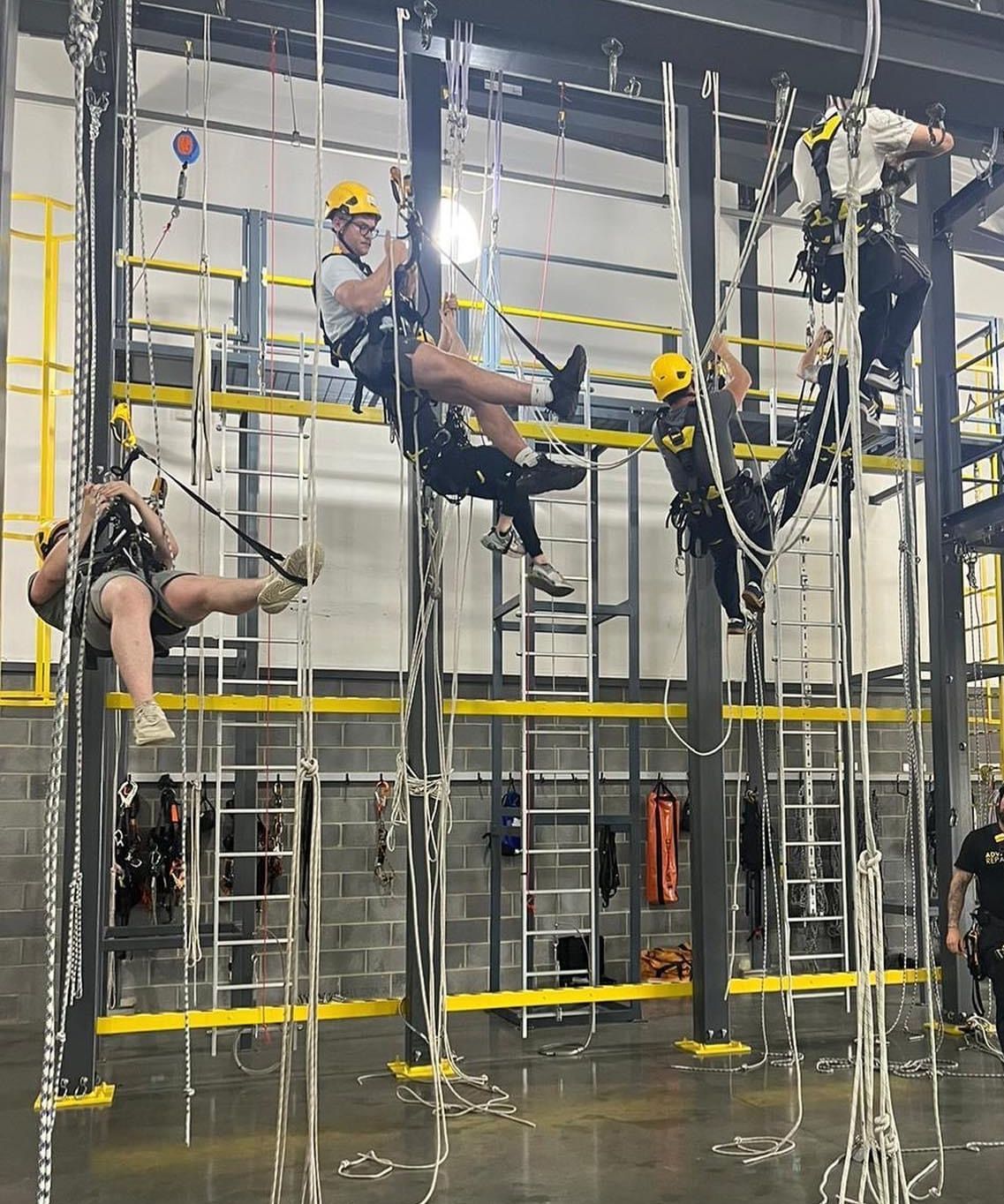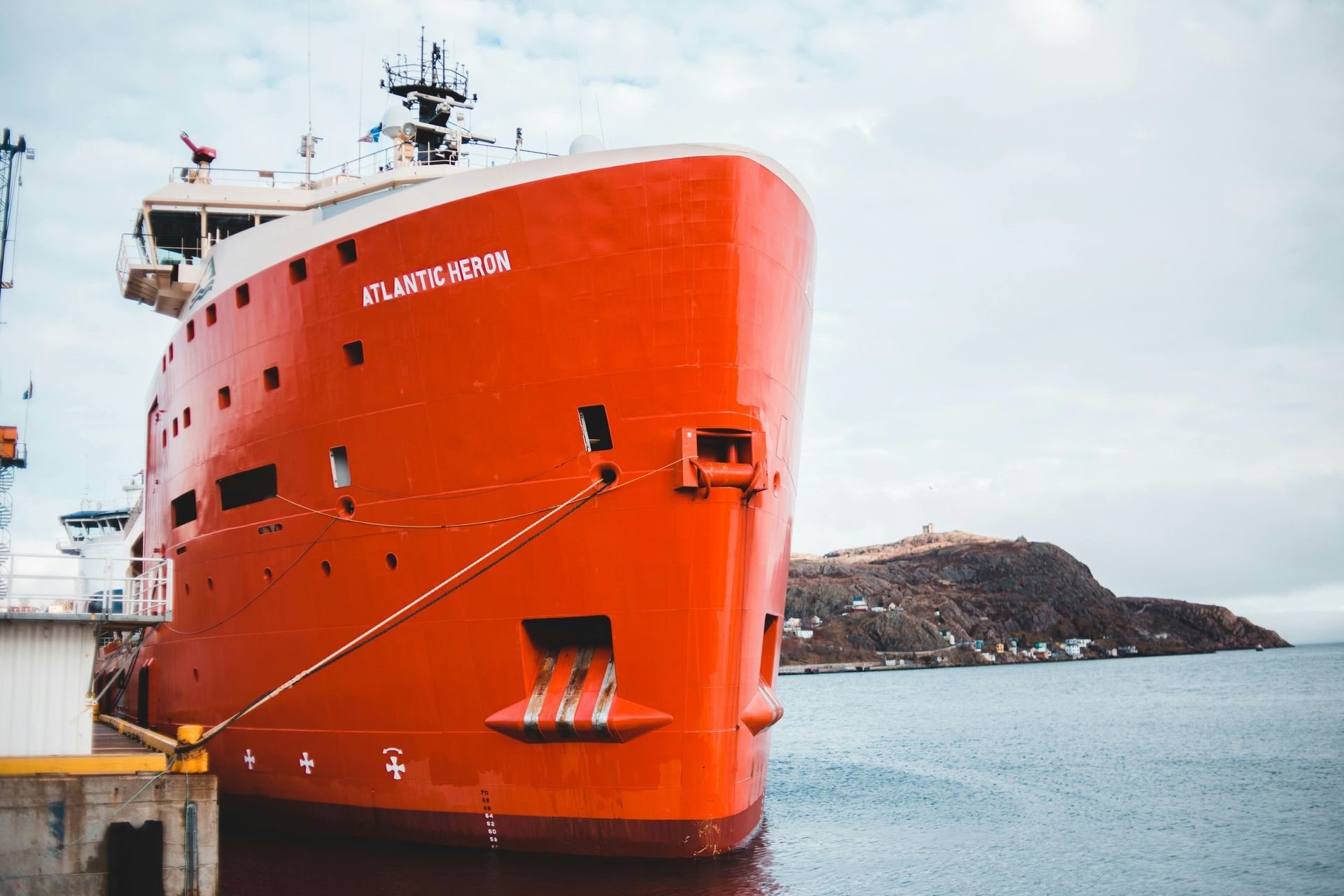Bridge Inspections

Bridge Inspections in the UK using Rope Access Techniques
Bridges are a vital part of the UK’s infrastructure, enabling efficient transport networks and economic growth. However, due to constant exposure to environmental factors, traffic loads, and structural ageing, requiring regular bridge inspection and maintenance to ensure their safety and longevity.
Traditional methods of bridge inspection, such as scaffolding or under-bridge units and platforms can be costly, time-consuming, and disruptive. Rope access techniques, however, provide a more efficient and cost-effective alternative for planned or reactive bridge inspections and maintenance. This method of access developed from caving and climbing practices, allows skilled rope access technicians to get to difficult-to-reach areas with minimal disruption for traffic and the surrounding environment over land or water.
This blog explores the role of rope access in bridge inspection across the UK, covering industry standards, benefits, techniques, and a few case studies from Dangle.
The Importance of Bridge Inspections
The United Kingdom is home to an impressive collection of over 70,000 bridges, showcasing a wide variety of architectural styles that span the spectrum from historic stone arches that tell stories of the past to sleek, modern cable-stayed structures that symbolise contemporary engineering prowess. However, as time progresses, these vital constructions face a number of challenges that lead to their deterioration. Factors contributing to their decline include:
- Ongoing weathering and corrosion from environmental elements, especially in coastal areas
- The impact of heavy traffic loads that place stress on their structures
- Structural fatigue that occurs over time with constant use
- Natural disasters, such as severe flooding, which can cause significant damage
To combat these issues, regular inspections of bridges are not only advisable but essential. These inspections play a crucial role in:
- Ensuring public safety by identifying potential hazards before they become serious
- Preventing costly emergency repairs that can arise from undetected problems
- Complying with various legal and regulatory requirements that govern infrastructure maintenance
- Extending the overall lifespan of bridges, allowing them to continue to serve the communities effectively for many more years to come.
In light of these considerations, it becomes clear that proactive measures and diligent assessments are vital in maintaining the integrity of the UK's extensive network of bridges.
Legislation and Standards for Bridge Inspections
Bridge inspections in the UK are governed by a comprehensive set of strict guidelines designed to ensure safety and efficiency in maintaining these vital structures. Key among these guidelines is the Design Manual for Roads and Bridges (DMRB), which lays out the essential standards for the inspection and maintenance of highway structures across the country. This manual serves as a pivotal resource for engineers and inspectors tasked with safeguarding public infrastructure.
Additionally, there is BD 63/17, which specifically focuses on the Inspection of Highway Structures. This document provides detailed definitions of various types of inspections, lays out the required frequencies for conducting these inspections, and establishes clear reporting procedures that must be followed to ensure thorough documentation and accountability.
Furthermore, the Management of Highway Structures Code of Practice offers invaluable guidance for local authorities, helping them navigate the complexities of maintaining and managing highway structures effectively.
Compliance with these stringent standards and guidelines is crucial, as it ensures that bridges remain safe, functional, and capable of supporting the demands of modern transportation. Maintaining rigorous inspection protocols ultimately helps to protect the public and preserve essential infrastructure for future generations.
Advantages of Rope Access for Bridge Inspections
Rope access has revolutionised bridge inspections and subsequent maintenance offering a safe, cost-effective, and efficient alternative to traditional methods. With growing infrastructure demands and increasing environmental challenges, this technique is set to play an even greater role in ensuring the safety and longevity of the nation’s bridges.
Compared to traditional methods, rope access offers several key benefits:
1. Cost-Effectiveness
- Eliminates the need for expensive scaffolding or under-bridge units.
- Requires fewer personnel and less equipment.
2. Minimal Disruption
- Does not obstruct traffic, reducing the need for road closures.
- Can be deployed quickly, limiting downtime.
3. Flexibility and Accessibility
- Can be used in hard-to-reach areas such as underneath arches, over water, or on tall piers.
- Suitable for various bridge types, including suspension bridges, viaducts, and steel trusses.
4. High Safety Standards
- Adheres to strict IRATA (Industrial Rope Access Trade Association) guidelines.
- Reduces the risk associated with working at height compared to traditional methods.
Types of Bridge Inspections Using Rope Access
General Visual Inspections (GVI)
General Visual Inspections, commonly referred to as GVI, are systematic visual assessments conducted every two years. The primary aim of these bridge inspections is to identify any obvious defects that may compromise the integrity of structures, such as cracks, corrosion, and surface deterioration. During a GVI, inspectors are permitted to evaluate the condition of the structure from a distance greater than one metre from the surface under inspection, allowing for an overall assessment of its visible state.
For more detailed and closer visual inspections—defined as those conducted at a distance of less than one metre from the surface—specialised techniques are typically employed. Depending on the specific needs and circumstances of the bridge operator, techniques such as rope access or drone technology may be utilised. These methods enable inspectors to gain a closer and more thorough examination of the structure, ensuring that potential issues are promptly identified and addressed.
Principal Inspections
Conducted every six years, these comprehensive bridge inspections involve a meticulous examination of all structural components to ensure safety and integrity. This thorough assessment is crucial for identifying any potential issues that may arise over time. Rope access techniques are employed by skilled engineers, enabling them to inspect hard-to-reach areas that are often overlooked, such as the undersides of deck slabs or the tops of tall piers. By utilising this specialised method, engineers can carry out a detailed analysis of these challenging locations, ensuring that every aspect of the bridge is thoroughly evaluated for any signs of wear or damage.
Special Inspections
Special inspections are conducted when specific structural concerns come to light, particularly in situations where there has been significant stress or damage to a structure. These inspections are especially important following extreme weather events, such as heavy storms or floods, which can compromise the integrity of bridges and infrastructure. Additionally, they are often necessary after incidents involving impact damage, such as when vehicles or vessels collide with structures like pontoons. Timely special inspections help ensure that any potential vulnerabilities are identified and addressed promptly, safeguarding the safety and durability of the affected structures.
Why Bridge Inspections Matter
Common Bridge Defects and Maintenance Using Rope Access
Bridges, vital components of our transportation infrastructure, often face a variety of defects that can compromise their integrity and safety. These defects may include corrosion of steel components, cracking of concrete, and deterioration of expansion joints, among others. To effectively address these issues, routine maintenance and inspection are essential. Rope access techniques have become an increasingly popular method for carrying out these inspections and repairs, as they offer a safe and efficient means to reach hard-to-access areas without the need for extensive scaffolding or aerial equipment. By utilising trained professionals who can navigate these challenging spaces with agility, bridge maintenance teams can promptly identify and remedy defects, ensuring the longevity and reliability of our bridges for years to come.
1. Corrosion and Steel Deterioration
Steel bridges and components are susceptible to rust, particularly in coastal or high-pollution areas. Rope access teams use techniques such as:
- Ultrasonic NDT thickness testing to assess metal loss.
- Steel surface preparation and application of protective coatings to mitigate further corrosion.
2. Concrete Cracking and Spalling
Concrete bridges often develop cracks due to thermal expansion, shrinkage, or reinforcement corrosion. Rope access technicians perform:
- Visual and ultrasonic inspections to detect internal damage.
- Crack injections or patch repairs to concrete also prevents worsening.
3. Joint and Bearing Maintenance
Bridge expansion joints and bearings allow for movement and flexibility. These components require regular:
- Lubrication to prevent stiffness.
- Replacement when excessive wear is detected.
4. Vegetation and Debris Removal
Overgrown vegetation and debris accumulation can block drainage systems, leading to water damage. Rope access is used to:
- Clear vegetation from bridge piers and abutments.
- Remove debris from gutters and expansion joints.
- Cleaning of barnacles from pontoons and other semi submerged areas to allow for very through close visual inspection, usually using high pressure water at 2500 psi or more depending on the surface to be cleaned.
Case Studies on Bridge Inspections and Rope Access in Action
Forth Road Bridge, Scotland
The Forth Road Bridge, a vital transport link located near Edinburgh, Scotland, plays an essential role in connecting communities and facilitating the flow of traffic across the region. Due to its intricate and complex suspension design, this iconic structure requires regular and thorough inspections to ensure its safety and reliability. In order to maintain the bridge's structural integrity, skilled rope access technicians have been deployed to carefully examine its cables and steelwork. This specialised approach allows them to conduct bridge inspections efficiently while avoiding costly lane closures that could disrupt the daily commute for thousands of drivers. As a result, the bridge remains an essential corridor for transportation while ensuring the safety of all who use it.
Tamar Bridge, England
Spanning the majestic River Tamar, this impressive bridge underwent essential bridge inspections utilising advanced rope access techniques. This innovative approach allowed engineers to thoroughly examine the main cables, tower structures, and deck components of the bridge while ensuring minimal disruption to the normal flow of traffic. By employing rope access, the team could effectively carry out their meticulous evaluations without the need for extensive road closures or detours, thus maintaining safety and convenience for all motorists and pedestrians crossing the bridge.
Bridge Inspections in Northern Ireland and Their Maintenance
Key Bridges in Northern Ireland
Northern Ireland has several important bridges requiring regular maintenance, including:
- Craigavon Bridge (Derry/Londonderry) – A two-tier steel bridge exposed to high levels of moisture, requiring frequent corrosion checks.
- Lagan Bridge (Belfast) – A key road and rail bridge where rope access teams inspect concrete structures and steel reinforcements.
- Foyle Bridge – A high-level bridge subject to strong winds, making rope access the safest and most practical method for inspection.
Challenges for Bridge Inspections in Northern Ireland
- Weather Conditions – High winds and heavy rain impact inspection schedules.
- Access Constraints – Many bridges cross rivers or urban areas, limiting traditional scaffolding options.
- Historic Structures – Older stone bridges require specialist conservation techniques.
Despite these challenges, rope access continues to be a preferred method due to its adaptability and cost-effectiveness.
Future of Rope Access in UK Bridge Inspections
As we look ahead, the future of rope access in UK bridge inspections is poised for significant transformation, driven by various factors defined by the evolving landscape of engineering and infrastructure maintenance.
Recent advancements in technology are set to revolutionise the way inspections are conducted. Innovations such as drones equipped with high-resolution cameras, robotics for remote inspections, and the integration of augmented reality are enhancing the efficiency and accuracy of bridge assessments. These cutting-edge tools complement traditional rope access techniques, allowing for a more comprehensive inspection process that minimises risks and improves overall data quality. As these technologies continue to develop, we can expect to see an increased reliance on rope access as a crucial part of safe and effective bridge inspections across the UK, ensuring that our infrastructure remains robust and reliable for years to come.
The future of bridge inspection is being shaped by:
- Drones – Used alongside rope access for preliminary assessments.
- AI and Machine Learning – Assisting in defect detection through image analysis and Computer Aided Design (CAD).
- Non-Destructive Testing (NDT) – Including Ultrasonic Testing (UT) and Magnetic Particle Inspection (MPI) testing for structural steel assessments.
Sustainability and Environmental Considerations
- Reducing carbon footprints by eliminating the need for heavy machinery.
- Using eco-friendly materials for repair and protective coatings.
Training and Workforce Development
- Increasing demand for IRATA-certified rope access technicians.
- Development of hybrid skill sets combining rope access with engineering expertise.
By embracing rope access and integrating new technologies, the UK can continue to maintain its critical transport infrastructure with minimal disruption and maximum efficiency.
For bridge owners, asset managers, and engineers, investing in rope access solutions is not just a practical choice—it’s a forward-thinking approach to infrastructure management and reduction in carbon footprints.
Would you like to learn more about rope access services for bridge maintenance? Get in touch with industry experts today!
Why Choose Dangle’s Academy?
Here at Dangle, we pride ourselves on offering a wide range of professional and comprehensive inspection, access, coatings, and composite (IACC) industrial services and training courses to cater to the needs of both the private and public sectors. Our dedication to providing high-quality work at height solutions and training has helped us establish a strong reputation in the industry.
With a team of highly skilled and experienced professionals, we are committed to delivering exceptional results that not only meet but exceed our clients' expectations. Our on-site working at height services are designed to minimise maintenance costs in the long and short-term, allowing our clients to save on valuable resources.
Located in Belfast, Northern Ireland, our headquarters serve as the centre of our operations across Ireland. However, we also have a Dangle office based in Scotland, ensuring that we can extend our services to a wider clientele across the United Kingdom. No matter where you are located, our team is always ready to assist you with your industrial maintenance or training needs.
If you would like to learn more about how our dedicated team can help you, we encourage you to get in touch with us today. Our friendly and professional staff are always available to provide you with the information and support you require.
Contact us now to discover the Dangle difference and let us be your trusted partner in meeting your industrial service and training needs today.
We'd Love a Share...
You might also like


